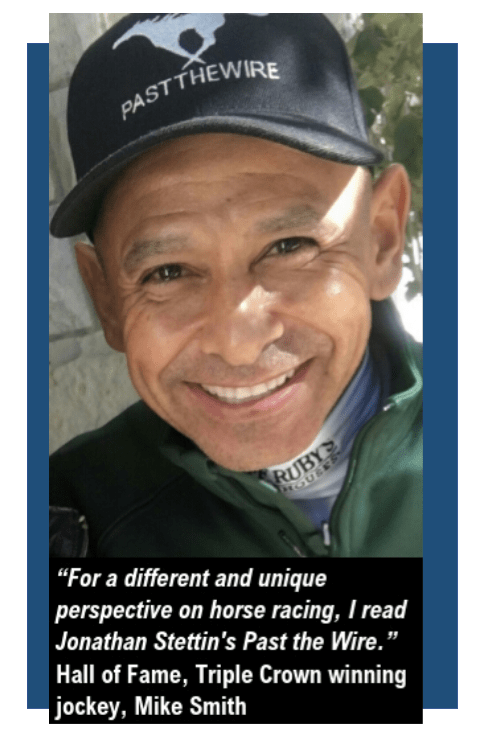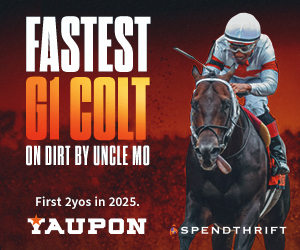
By Steve Zorn
On January 1st, the New York Racing Association (NYRA) introduced a new Pick Six bet, its third version of the once-popular wager in less than 18 months. Now that NYRA has been through the first two weekends of the new racing year, there’s enough data to make a preliminary judgment as to how the new bet is doing. Spoiler: it looks good for NYRA, justifying the decision to try a new model for the bet; but from the bettor’s point of view, maybe, maybe not.
In its new incarnation, the Pick 6 is now a 20-cent bet that gets paid out every day. If no one hits all six, then that day’s pool, net of the 20% takeout, gets split up among all those who had five winners. No carryover, ever. That contrasts with NYRA’s traditional $2 Pick 6, in effect from 1985 until August 2019, which had a xx % takeout, and where only 75% of the net pool carried over if nobody picked all six winners, with the remaining 25% going every day to those who picked five, or on occasion four, whatever was the highest number of actual winners on bettors’ tickets. The new wager is also a change from the NYRA “Empire 6” jackpot bet, offered, ever so briefly, from August 7, 2019 until the end of 2020. In the Empire 6, which, like the new version, had a 20% takeout, 75% of the day’s pool was paid out to the tickets with the highest number of winners that day (which was often all six), while the other 25% went into a jackpot that got paid out only if there was a single, unique, winning ticket, or on mandatory payout days (always at the end of a race meet and occasionally, at NYRA’s discretion, on other days) as well.
So, how has the very newest variant performed, especially when compared with its two predecessors? For the first seven race days of 2021, including two weekends, the Pick 6 drew a total handle of $$854,786, or an average of $122,112 per day. That compares to an average of $81,263 for the first seven race days in 2020, when there was a slow but steadily growing jackpot (the jackpot reached $113,745 on the seventh racing day of the year), and to a daily average of just $57,390 in January 2019, the last year of the traditional Pick 6. So far, from NYRA’s point of view, so good.
There are, of course, caveats. With a jackpot bet, handle tends to grow precipitously on a mandatory-payout day. For example, Gulfstream’s jackpot Pick 6 drew new money of more than $6 million last Saturday on the promise that the entire pool would be paid out. (It was, but, not entirely surprisingly, given that all six races were won by horses that went off at 7-1 or lower, it paid only $14,627 for each winning ticket.) And on Florida Derby day in 2018, another mandatory payout occasion, the total Pick 6 handle topped $16 million, all of that money chasing a carryover of nearly $5 million. Last year, when NYRA declared a mandatory payout on February 9, by which time the carryover had risen to over $360,000, the wager drew new money of more than $2.5 million. Thereafter, though, as NYRA went to a regular biweekly schedule on mandatory payouts, the handle bump was more modest, with only $420,000 coming in on the next payout day, February 23. It probably needs a full year’s experience with the new variant to determine which is best for NYRA’s bottom line, but at this point it looks like the daily-payout, no-jackpot bet is at least as good for NYRA as the prior, highly touted, Empire 6, though there are so many variables at work – the weather, competing tracks, whether the “whales” at Elite Turf Club and elsewhere had anywhere else to go with their money, etc. – that one can’t be definitive.
But tinkering with the Pick 6 format alone will not be a magic bullet for race tracks. The bet, in any of its current permutations, consistently draws a smaller handle than win-place-show, exacta and trifecta betting, all of which focus on a single race, and much less than the more recent innovations of the Pick 4, which is a lot easier to hit than a Pick 6, and the Pick 5, which typically has lower takeout while still offering the prospect of significant payoffs.
So much for the race tracks’ perspective. Now let’s look at the bet from the player’s perspective; is NYRA’s new version a good thing for the bettor?
The Pick 6 made its debut in the US in 1980, at Hollywood Park, which imported the “5-10” wager that had been attracting California horse players to Agua Caliente in Tijuana for years. Hollywood added the carryover feature – a portion of the pool rolls over if no one hits all six – in 1983, and the bet made its way to the NYRA tracks in New York in 1985. For a time, it was the only race track bet that, in Steve Crist’s words, offered the possibility of a “life-changing score” if one hit it on a day when there was a substantial carryover and, hence, lots of new money in the pool as well. Sometimes, with a substantial carryover, it was actually a bet with a positive expectation: the amount of the carryover was greater than the takeout on the new money, so bettors that day received, in the aggregate, more than 100% of what they bet. The Pick 6 was not, however, a bet for the average $2 bettor. At $2 per ticket, the cost of covering even a small fraction of the field quickly became prohibitive. For example, if all six races have eight-horse fields, that’s 262,144 possible combinations, or, at $2 a ticket, more than half a million dollars to buy the pool. Ain’t gonna happen. Even cutting a ticket down to, say, three horses per race – which might get you a 50% probability of winning each race, or a roughly 1.5% chance of getting all six – would cost nearly $1,500. So, as Crist and pastthewire’s own Pick 6 King Jonathan Stettin discovered, the way to play was to find a couple of singles, to mix and match more- and less-probable horses on multiple tickets, and out-handicap the crowd rather than out-spend them.
The introduction of the jackpot Pick 6, and especially the reduction in bet size to 20 cents, totally changed the wager. Now, a single ticket could cover 10 times as many combinations, giving rise to “caveman” tickets that just put all possible contenders on a single bet – a betting methodology that makes handicapping skills almost irrelevant. And, as I have written in an earlier pastthewire column, the jackpot feature means that those few “life-changing” scores that still occur are mostly snapped up by huge, well-heeled betting syndicates that, in effect, buy the whole pool and hope for a few longshots to make theirs the only winning tickets. The ordinary $2 bettor hardly has a chance.
NYRA’s new version solves part of the problems of both earlier Pick 6 versions. By eliminating the carryover and the jackpot, it discourages the big, ADW-based players like Elite Turf Club from using their wealth to dominate the pools. But the 20-cent minimum still encourages sloppy handicapping – because over-broad tickets are too easily affordable – and so lessens the likelihood that someone who wins the Pick 6 will, in fact, be among only a few winners and will thereby receive that life-changing amount. By way of example, the Pick 6 payoffs at Aqueduct for the first seven race days of 2020 ranged from $1,351.50 to $15,451.80, with an average of $5,813. Nice amounts to go home with, but by no means life-changing. And the bet takes away the carryover, which made even the usually player-unfriendly jackpot bets playable on mandatory-payout days. So, for most serious players, it looks like the action will be in the lower-takeout Pick 5s. But for NYRA, it’s good to see continuing experimentation with the Pick 6. Don’t give up yet; one of these days you’ll get that bet just right (hint: it involves lower takeout).
Photo Credit: NYRA – “NYRA Scenery”




